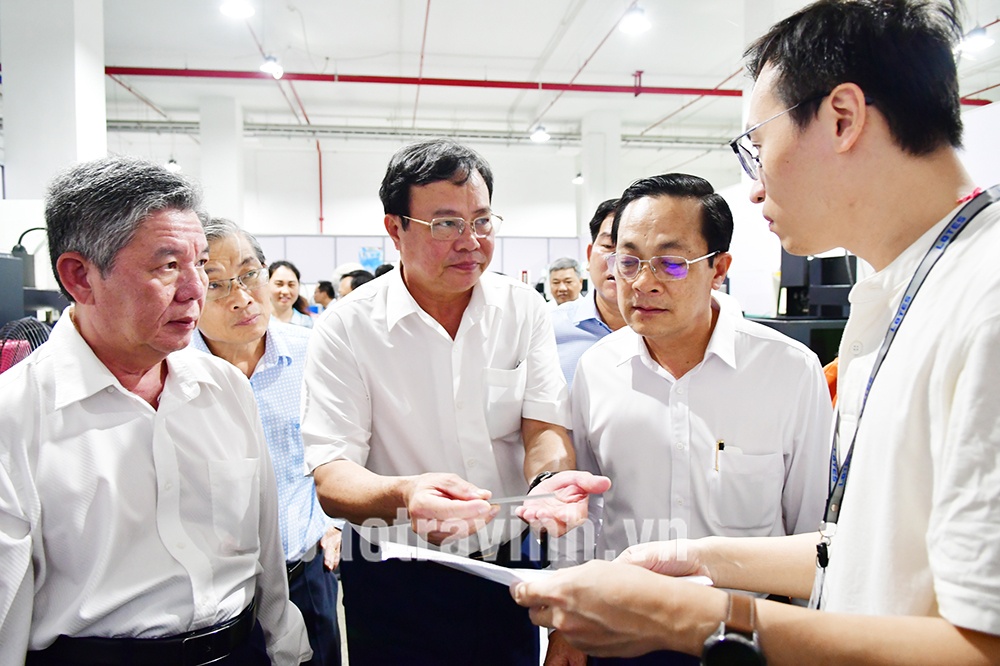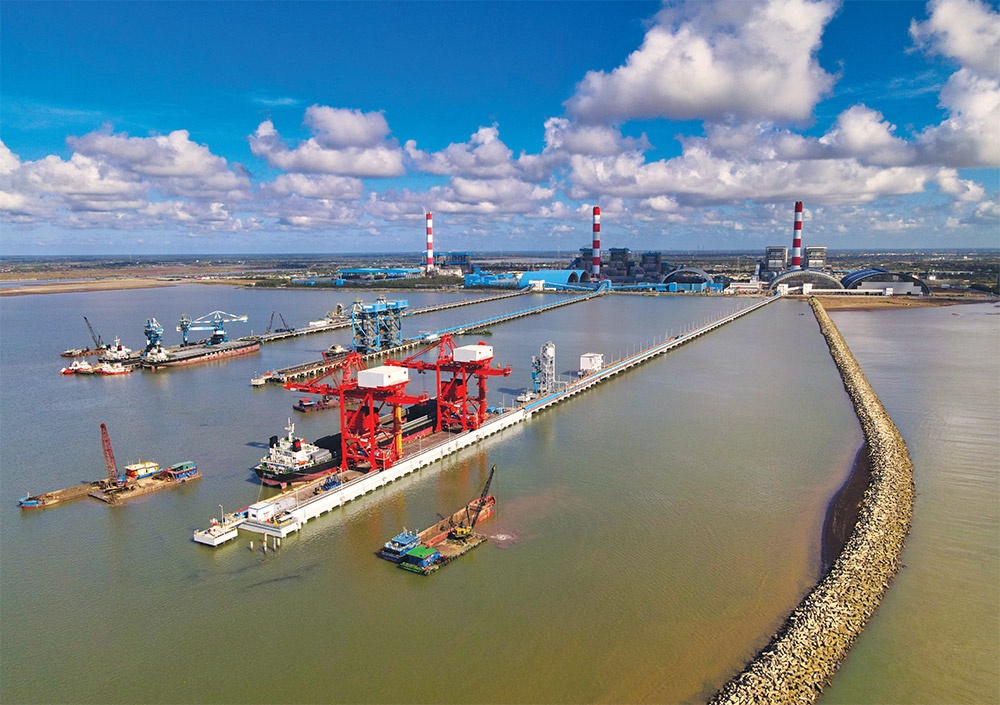Tra Vinh adds to its regional rank scores
 |
| Leaders of Tra Vinh province visit the computer components factory in Lien Ha Thai Industrial Park, Thai Binh province - photo Baotravinh.vn |
The province’s regional GDP is estimated to have reached 10.04 per cent growth in 2024, higher than the target of 8.5 per cent. The results saw Tra Vinh lead in the Mekong Delta region and rank eighth nationwide.
Authorities in the locality have effectively implemented key tasks and national target programmes across the year. It accelerated projects funded by the central government, and completed compensation and resettlement works to begin construction of freshwater reservoir infrastructure along Lang The river. The site handover has been completed to implement Dai Ngai bridge.
Efforts have also been made to expedite projects to develop the marine economy, with a focus on renewable energy ventures.
At the same time, Tra Vinh has invested in some additional infrastructure works in Dinh An Economic Zone. While carrying out four remaining wind power projects, the province also calls for funding in wind energy in line with the Power Development Plan VIII. Support is being provided to investors to research and explore the potential of renewable energy in both coastal and offshore areas. This is coupled with support for green hydrogen projects and petroleum depots.
Focus has also been given to completing the documents of a coastal corridor route, Co Chien 2 bridge, and other important transport projects.
In addition, Tra Vinh is forming concentrated production areas with key crops, replicating efficient farming models, and adopting mechanisation in production. A transition is underway to restructure the agriculture sector to become resilient to climate change and market movements, while coconut and fruit-growing areas are being funded with new varieties and renovated towards a concentrated and specialised direction.
More attention is being paid to effectively operating the irrigation system, especially the 3/2 canal pumping station. Tra Vinh submitted a dossier to the government to gain recognition of having completed the task of building new rural areas in 2024.
 |
| Tra Vinh has improved competitiveness compared to other provinces in the region |
Furthermore, Tra Vinh has implemented the national strategy on attracting talent for this decade to enhance the quality of human resources in the province’s key and spearhead industries. Improvements were recorded in the quality of personnel in the political system, science and technology, and various enterprises.
The number of civil servants and public employees has reached over 20,400 people with expertise in foreign languages to meet the requirements for innovation and international integration. The province also organised a civil servant recruitment exam and approved the results. A plan has also been greenlit to recruit over 500 civil servants for 21 agencies and units.
Meanwhile, the province has taken drastic measures to improve scores across many competitiveness areas. As a result, the province recorded higher scores and rankings for several indexes last year.
Specifically, it moved up two places in the Public Administration Reform Index, ranking 48 out of 63 localities nationwide and seven out of 13 localities in the Mekong Delta. The Satisfaction Index of Public Administrative Services climbed four places, ranking 15th nationwide and second in the Mekong Delta.
In addition, Tra Vinh’s Provincial Competitiveness Index ranking jumped two places, placing 24th nationwide and seventh in the Mekong Delta.
Regarding the District and Department Competitiveness Index, Cau Ke district scored 87.35 points, taking the lead among local districts, while the Provincial Market Management Department scored 93.82 points, leading provincial departments and agencies.
When it comes to three breakthrough tasks, Tra Vinh has implemented efficient capital allocation for infrastructure projects, creating a driving force for socioeconomic development. Attention is paid to investing in irrigation and transportation projects, while investors have received support from the province to accelerate the construction of technical infrastructure at Hiep My Tay and Tan Ngai industrial clusters.
In a bid to implement a digital government, the province is also focused on upgrading and expanding IT infrastructure, creating momentum to promote a digital economy and society.
What the stars mean:
★ Poor ★ ★ Promising ★★★ Good ★★★★ Very good ★★★★★ Exceptional
Related Contents
Latest News
More News
- Government moves to establish International Financial Centre (December 21, 2025 | 21:00)
- Vietnam's IFC to target global investment flows (December 21, 2025 | 18:00)
- Two national hospitals expand capacity with new facilities (December 20, 2025 | 09:00)
- Ha Tinh breaks ground on major Vingroup industrial and energy projects (December 19, 2025 | 18:24)
- EVN launches major power infrastructure projects nationwide (December 19, 2025 | 18:17)
- VAL inaugurates second production line to meet domestic animal feed demand (December 19, 2025 | 16:37)
- Sun Group pioneers urban tram system in Phu Quoc (December 19, 2025 | 15:00)
- Seven major projects launched to drive Hanoi’s next growth phase (December 19, 2025 | 14:00)
- Securing capital and efficiency for Vietnam’s 2026-2030 growth ambitions (December 17, 2025 | 10:00)
- Vietnam bucking trend in the global M&A landscape (December 16, 2025 | 14:20)

 Tag:
Tag:




















 Mobile Version
Mobile Version